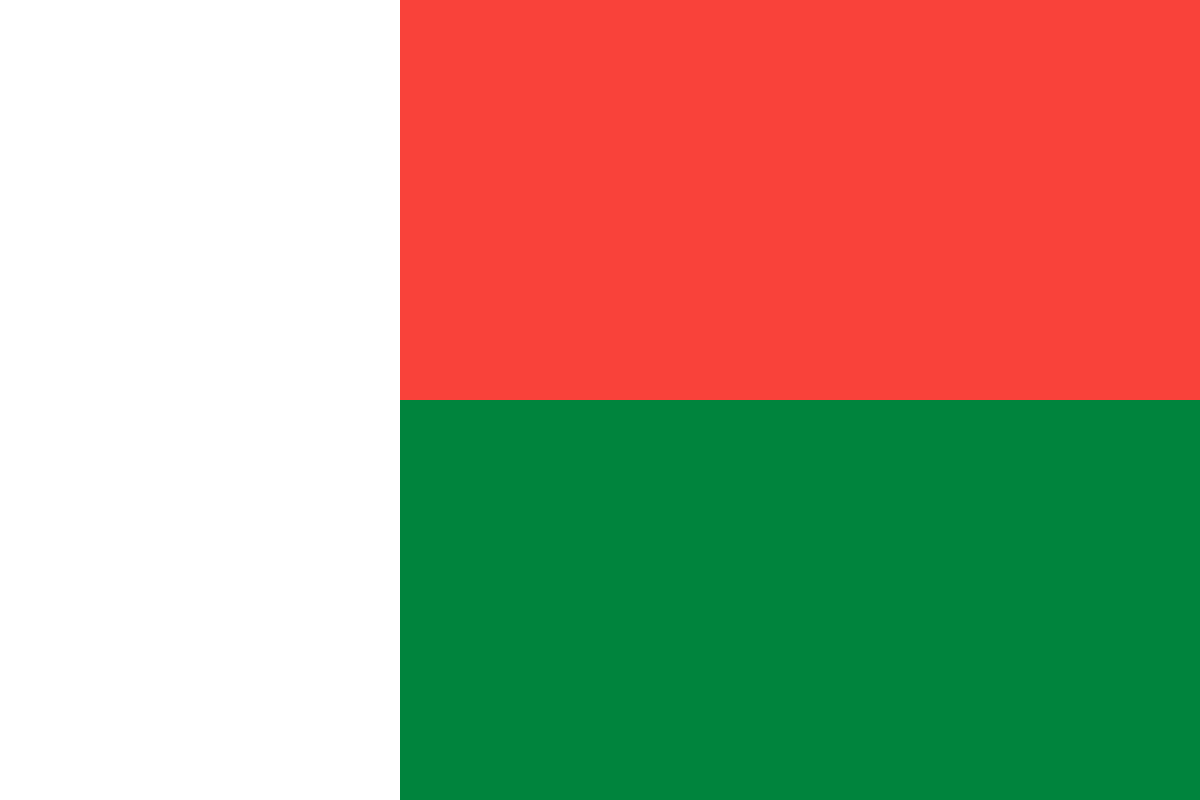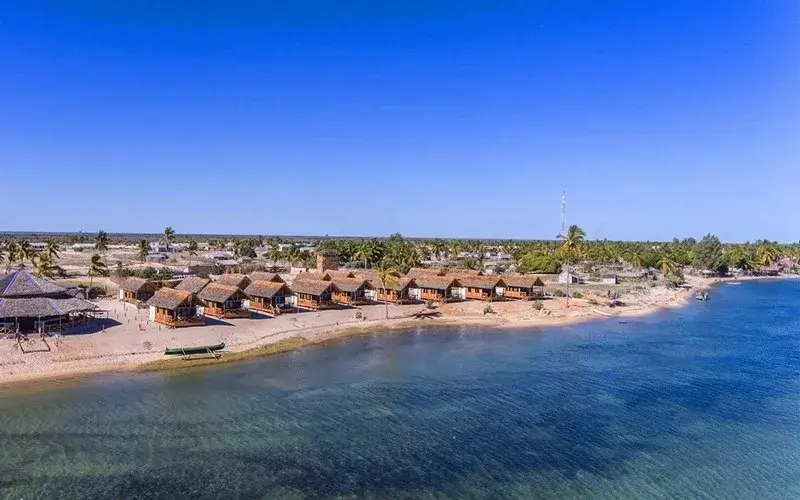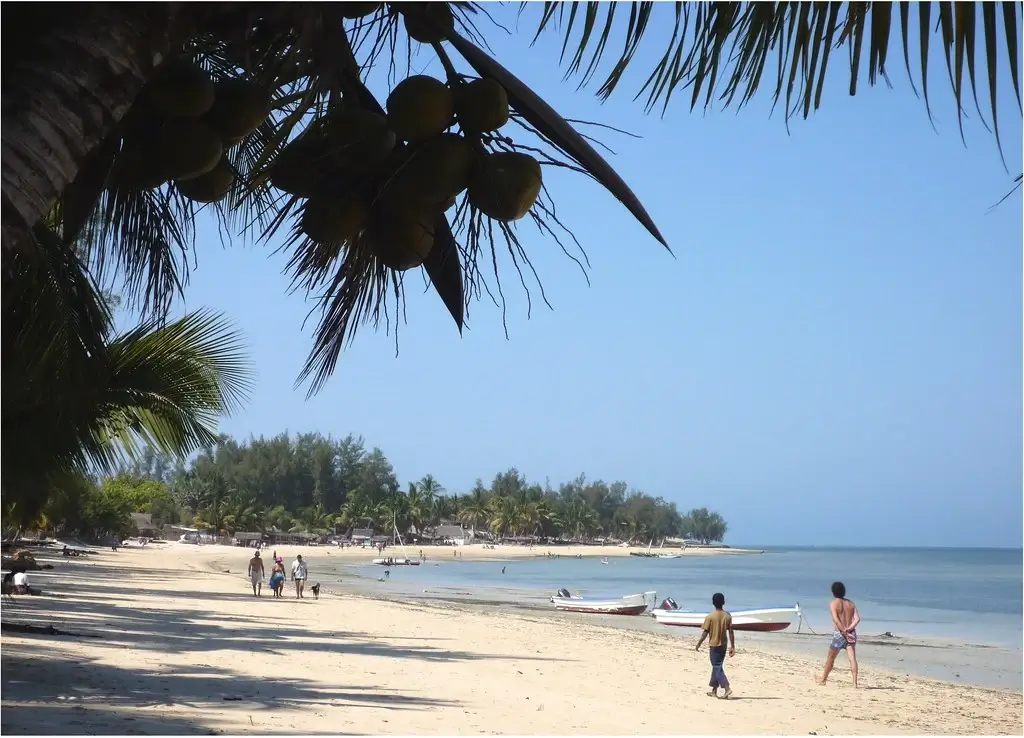Best Kitesurfing Spots in Madagascar

Madagascar, with its vast coastline stretching over 5,000 kilometers, offers an unparalleled kitesurfing experience amidst pristine natural beauty and diverse landscapes. This island nation in the Indian Ocean boasts numerous kitesurfing spots characterized by warm turquoise waters, sandy beaches, and consistent trade winds. Here you can discover the best kitesurfing spots in Madagascar.
From the flatwater lagoons of Anakao to the rugged shores of Sakalava Bay, Madagascar caters to kitesurfers of all skill levels. The island’s remote locations and uncrowded beaches provide an exclusive setting for riders seeking solitude and adventure.
With its unique flora and fauna, vibrant culture, and hospitable locals, Madagascar offers not only exceptional kitesurfing conditions but also a rich and immersive travel experience. Whether you’re a seasoned kitesurfer or a beginner looking to learn, Madagascar promises unforgettable moments on the water and beyond.

Anakao
Anakao, a tranquil fishing village on Madagascar’s southwest coast, is an emerging hotspot for kitesurfing enthusiasts. Renowned for its pristine beaches and reliable wind conditions, Anakao offers an idyllic setting for both beginners and seasoned kitesurfers.
The warm Indian Ocean waters, coupled with consistent trade winds, create perfect conditions for the sport from April to November. The surrounding coral reefs not only enhance the scenic beauty but also provide ideal shallow areas for learning.
The village’s laid-back atmosphere, combined with its natural charm, makes Anakao a captivating destination for adventure and relaxation alike.
Wind conditions
Anakao offers excellent kitesurfing conditions due to its consistent winds. Here’s a breakdown of the average seasonal wind conditions in Anakao, Madagascar, in regards to kitesurfing:
Summer (December to February)
- Wind Speed: 15-25 knots
- Conditions: Generally lighter winds compared to other seasons, but still reliable. Morning winds are usually lighter, picking up in the afternoon.
Autumn (March to May)
- Wind Speed: 20-30 knots
- Conditions: Strong and steady winds. Ideal for experienced kitesurfers looking for thrilling rides. The wind is most consistent in the afternoons.
Winter (June to August)
- Wind Speed: 20-30 knots
- Conditions: Peak kitesurfing season. The strongest and most reliable winds, often reaching 30 knots. Perfect for all levels, from beginners to experts.
Spring (September to November)
- Wind Speed: 15-25 knots
- Conditions: Consistent and moderate winds, similar to summer. Great for kitesurfers of all skill levels. Afternoon winds are typically stronger.
These wind conditions make Anakao a sought-after destination for kitesurfers, offering a mix of reliable and strong winds throughout the year.
Water conditions
Anakao, Madagascar, is renowned for its excellent kitesurfing conditions, characterized by a variety of water features that cater to different skill levels and preferences. Here are the key water conditions in Anakao:
Waves and Flat Water
- Lagoon Area: Anakao boasts a large, shallow lagoon with flat water, ideal for beginners and freestyle kitesurfers. The flat water provides a perfect training ground with minimal chop.
- Wave Conditions: Outside the lagoon, there are consistent waves that appeal to more advanced riders looking for wave-riding opportunities. The waves are typically moderate, providing a good balance between challenge and enjoyment.
Tides
- Tidal Range: Anakao experiences a significant tidal range, influencing the water depth and the exposure of sandbanks. It’s essential to check the tide tables to ensure the best conditions for kitesurfing.
- High Tide: During high tide, the lagoon fills up, offering expansive flat-water areas.
- Low Tide: At low tide, some areas may become too shallow, revealing sandbanks and reef patches.
Reefs and Hazards
- Sandbanks: Some sandbanks can appear during low tide, which can be both a hazard and an advantage, offering natural flat-water areas but also requiring caution to avoid grounding.
- Marine Life: While the waters around Anakao are rich in marine life, including fish and occasional sea turtles, they generally do not pose a significant hazard to kitesurfers.
General Water Conditions
- Water Temperature: The water temperature is generally warm year-round, ranging from 24°C (75°F) in the cooler months to 28°C (82°F) in the warmer months. This makes for comfortable kitesurfing without the need for a wetsuit for most of the year.
- Clarity: The water in Anakao is typically clear, offering good visibility, which is helpful for spotting reefs and marine life.
Overall, Anakao offers a versatile kitesurfing environment with flat water and waves, accommodating both beginners and advanced riders. The presence of reefs and tidal changes necessitates some caution, but the generally warm and clear waters make it a prime destination for kitesurfers.

Belo sur Mer
Belo sur Mer, Madagascar, is a prime kitesurfing destination, renowned for its consistent trade winds, especially during the winter months from May to October. With wind speeds ranging from 15-25 knots, kitesurfers can enjoy steady and reliable conditions.
The area features a mix of flat water in the lagoon and small to medium waves beyond the reef, catering to both freestyle and wave riders. The warm water temperatures, ranging from 24°C to 28°C, make it comfortable for long kitesurfing sessions.
Its stunning coastal scenery and diverse marine life add to the allure, making Belo sur Mer a must-visit spot for kitesurfing enthusiasts.
Wind conditions
Belo sur Mer is a fantastic destination for kitesurfing, known for its consistent winds and diverse water conditions. Here are the average seasonal wind conditions in Belo sur Mer:
Seasonal Wind Conditions
- Winter (May to October)
- Wind Speed: 15-25 knots
- Wind Direction: Predominantly south-easterly trade winds.
- Consistency: This period is the best for kitesurfing, with consistent and reliable winds nearly every day.
- Summer (November to April)
- Wind Speed: 10-20 knots
- Wind Direction: Variable, with winds coming from the north-west to north-east.
- Consistency: Winds are less consistent compared to winter. There are periods of calm weather, and occasional tropical storms can bring stronger winds.
Additional Considerations
- Best Time to Visit: The prime kitesurfing season is during the winter months from May to October, when the trade winds are strong and consistent.
- Daily Wind Patterns: Typically, winds pick up by late morning and peak in the afternoon, providing several hours of excellent kitesurfing conditions each day.
Water Conditions
- Flat Water and Waves: Belo sur Mer offers a mix of flat water in the lagoon and small to medium waves outside the reef, catering to both freestyle and wave riders.
- Water Temperature: Generally warm, ranging from 24°C (75°F) to 28°C (82°F), making it comfortable for kitesurfing without a wetsuit.
In summary, Belo sur Mer has optimal kitesurfing conditions, especially during the winter months with strong, steady trade winds. The summer months offer lighter, more variable winds, suitable for those who prefer a more relaxed kitesurfing experience.
- Waves: The lagoon offers flat water ideal for freestyle kitesurfing, while beyond the reef, there are small to medium waves that cater to wave riders.
- Tides: The tidal range is moderate, with the lagoon remaining accessible at different tide levels. However, low tides can expose more of the reef, so caution is advised.
- Reefs: The presence of reefs provides some wave action but also requires kitesurfers to be cautious to avoid injury or equipment damage.
- Hazards: Apart from the reefs, there are no significant hazards, making it a relatively safe spot for kitesurfing.
These conditions, combined with consistent trade winds, make Belo sur Mer a fantastic destination for kitesurfers of all skill levels.

Ifaty
Ifaty, located on the southwest coast of Madagascar, is an excellent kitesurfing destination. Known for its stunning lagoon and consistent trade winds, Ifaty offers ideal conditions for both beginners and experienced kitesurfers.
The lagoon provides flat, shallow water perfect for freestyle and learning, while the outer reef presents small to medium waves suitable for wave riding.
With its pristine beaches, clear waters, and vibrant marine life, Ifaty is not only a kitesurfing paradise but also a beautiful spot to explore. The friendly local community and growing infrastructure make it a welcoming and accessible destination for kitesurfers.
Wind conditions
The average seasonal wind conditions in Ifaty are ideal for kitesurfing, particularly during the trade wind season. Here’s a breakdown by season:
- Summer (December to February): Winds are generally lighter, ranging from 10 to 15 knots. This period can be less consistent for kitesurfing but still offers some rideable days.
- Autumn (March to May): Winds start to pick up, averaging between 15 to 20 knots. This season marks the beginning of more reliable kitesurfing conditions.
- Winter (June to August): The trade wind season is in full swing, with winds consistently blowing between 20 to 25 knots. This is the peak season for kitesurfing in Ifaty, providing excellent and steady wind conditions.
- Spring (September to November): Winds remain strong, averaging between 15 to 20 knots. As the season progresses, wind strength can vary but still offers good kitesurfing conditions.
Ifaty’s wind conditions are best during the winter months, making it a prime kitesurfing destination during this period.
Water conditions
Ifaty offers favorable water conditions for kitesurfing, making it a popular destination for both beginners and experienced riders. Here’s an overview of the water conditions:
- Waves: Ifaty’s lagoon is protected by an outer reef, which helps to keep the waters inside the lagoon relatively calm. This results in flat to slightly choppy water conditions, ideal for freestyle and learning new tricks. Outside the reef, wave conditions can be more challenging, suitable for advanced kitesurfers seeking wave riding.
- Tides: The tidal range in Ifaty is moderate, with two high and two low tides each day. The lagoon’s water level can vary significantly with the tide, exposing more sandbanks at low tide and providing deeper water at high tide. It’s important to check tide charts to ensure optimal kitesurfing times.
- Reefs: The outer reef protects the lagoon from large swells, creating a safe and stable kitesurfing environment. However, kitesurfers should be cautious of the reef edges, particularly at lower tides, to avoid potential hazards.
- Hazards: The primary hazards in Ifaty are the exposed reef and occasional shallow sandbanks at low tide. Wearing booties can help protect against sharp coral and rocks.
Ifaty’s water conditions are well-suited for a variety of kitesurfing styles, with the calm lagoon providing a great learning environment and the outer reef offering wave riding opportunities.

Sakalava Bay
Sakalava Bay, located on the northern coast of Madagascar near Diego Suarez, is a premier kitesurfing destination renowned for its consistent trade winds and stunning natural beauty.
The bay offers flat to slightly choppy waters, making it ideal for both beginners and advanced kitesurfers. Protected by an outer reef, the bay provides safe and enjoyable conditions with minimal hazards.
The wind season runs from April to November, with steady winds ranging from 15 to 30 knots. With its picturesque setting, reliable wind conditions, and crystal-clear waters, Sakalava Bay is a top choice for kitesurfing enthusiasts seeking an unforgettable experience.
Wind conditions
Sakalava Bay is a renowned kitesurfing spot with excellent wind conditions throughout the year. Here’s a breakdown of the average seasonal wind conditions:
- Spring (September to November): Winds are generally strong and consistent, averaging 15 to 25 knots. This season marks the beginning of the peak kitesurfing period.
- Summer (December to February): Winds can vary but typically remain steady, averaging 10 to 20 knots. While not as strong as in spring, conditions are still favorable for kitesurfing.
- Autumn (March to May): The wind picks up again, averaging 15 to 25 knots, similar to the spring conditions. This period is also popular among kitesurfers.
- Winter (June to August): This is the peak season for kitesurfing in Sakalava Bay, with strong and reliable trade winds averaging 20 to 30 knots, providing ideal conditions for all levels of kitesurfers.
These consistent wind conditions make Sakalava Bay a top destination for kitesurfing enthusiasts.
Water conditions
Sakalava Bay offers favorable water conditions for kitesurfing enthusiasts:
- Waves: The bay is known for its relatively calm waters, with minimal wave action. This makes it ideal for kitesurfing, especially for beginners and intermediate riders who prefer flat water conditions.
- Tides: Tidal fluctuations in Sakalava Bay are moderate, with a typical range of around 1 to 2 meters. While tidal currents may influence water depth and flow, they generally do not pose significant challenges for kitesurfers.
- Reefs: The bay is surrounded by stunning coral reefs, but they are typically located farther offshore and do not pose immediate hazards to kitesurfers within the main kitesurfing areas. However, it’s essential to be mindful of reef locations and avoid areas with shallow reefs to prevent damage to equipment and ensure safety.
Sakalava Bay offers excellent conditions for kitesurfing, with its flat water surface and minimal wave action, making it an ideal spot for riders of all skill levels to enjoy their sessions.

Baie de Diego
Baie de Diego is a hidden gem for kitesurfing enthusiasts:
- Scenic Beauty: This picturesque bay boasts stunning natural beauty, with turquoise waters and pristine sandy beaches, creating an idyllic backdrop for kitesurfing sessions.
- Wind Conditions: Baie de Diego benefits from consistent trade winds, particularly during the windy season from May to October, providing excellent opportunities for kitesurfing.
- Relatively Untouched: Unlike more popular kitesurfing destinations, Baie de Diego remains relatively undiscovered, offering a tranquil and uncrowded environment for riders to enjoy their sessions without interference.
Baie de Diego offers a unique and memorable kitesurfing experience amidst breathtaking natural surroundings.
Wind conditions
In Baie de Diego, the seasonal wind conditions are favorable for kitesurfing:
- Windy Season: The windy season typically occurs from May to October, coinciding with the austral winter. During this period, strong and consistent trade winds, known as the southeast trade winds or “Alizés,” blow across the region, providing ideal conditions for kitesurfing.
- Wind Speed: Wind speeds in Baie de Diego during the windy season can range from 15 to 25 knots on average, with occasional stronger gusts. These wind speeds offer excellent opportunities for kitesurfers of all skill levels to enjoy their sessions.
- Direction: The prevailing wind direction in Baie de Diego during the windy season is predominantly from the southeast, creating favorable cross-shore or side-onshore wind conditions for kitesurfing along the coastline.
Baie de Diego offers consistent and reliable wind conditions during the windy season, making it a fantastic destination for kitesurfing enthusiasts.
Water conditions
In Baie de Diego, the water conditions are very suitable for kitesurfing, offering a combination of flatwater and small to moderate waves:
- Waves: The waves in Baie de Diego are generally small to moderate in size, particularly during the windy season when the southeast trade winds generate consistent swells. These waves are ideal for kitesurfers looking to practice wave riding or perform jumps.
- Tides: The tidal range in Baie de Diego is typically minimal, with little variation in water levels throughout the day. Kitesurfers can enjoy their sessions without significant interference from tidal currents.
Overall, Baie de Diego offers favorable water conditions for kitesurfing, with a mix of flatwater and waves to suit different riding styles and preferences.
